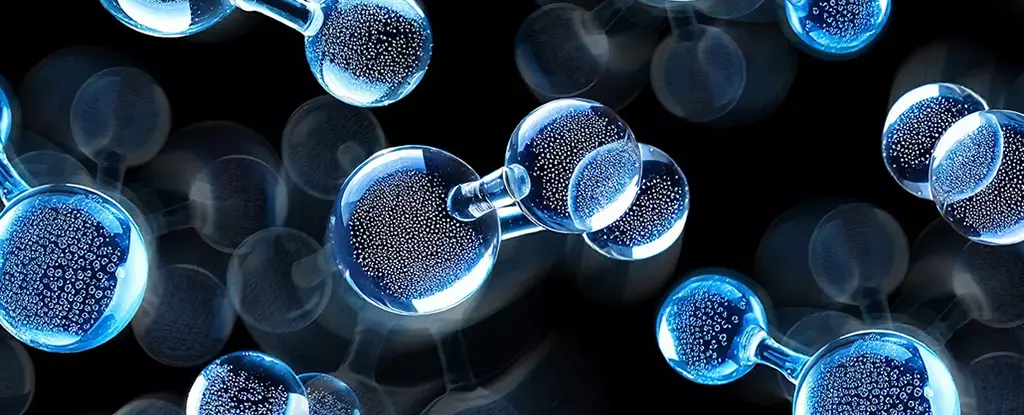In a groundbreaking achievement, researchers have experimentally confirmed the existence of plastic Ice VII, a novel state of water that has been anticipated by theoretical studies for over a decade. Contrary to what the name might suggest—echoing titles of B-grade movies—plastic Ice VII is an exotic form of water with significant implications for our understanding of foreign ecosystems. Found under conditions that exist in the depths of alien oceans, this unique phase of ice showcases the complexities and wonders of water under extreme conditions.
Plastic Ice VII is not formed through ordinary processes; rather, it requires immense temperature and pressure to materialize. Specifically, scientists managed to synthesize this fascinating ice at temperatures reaching 327 °C (620 °F) and pressures escalating up to 6 gigapascals. The pioneering experiments were conducted at the Institut Laue-Langevin (ILL) in France, where state-of-the-art instruments allowed researchers to meticulously observe the phase transition of water into Ice VII. The implications of this experiment are profound, as the conditions replicated in the lab are akin to those that might exist in the icy underbellies of celestial bodies, such as the moons of Jupiter and Saturn, or even the distant planet Neptune.
To delve deeper into the molecular dynamics of Ice VII, the research team employed a technique known as quasi-elastic neutron scattering (QENS). This method offers unparalleled insight into the movements of particles within a substance, making it particularly advantageous for studying exotic phase transitions like that of plastic Ice VII. According to physicist Maria Rescigno from Sapienza University of Rome, QENS’s ability to probe both translational and rotational behaviors of particles provides effectively richer data than other traditional spectroscopic techniques.
Plastic Ice VII has an intriguing crystalline structure, characterized by a disordered, interlaced cubic formation. The arrangement of hydrogen atoms within this structure adds another layer of complexity. One of the primary mysteries surrounding Ice VII has been the behavior of its hydrogen atoms during a phase transition. Previous theories posited that hydrogen atoms within Ice VII would rotate freely; however, the recent findings have revealed a staggered rotational mechanism instead. This deviation highlights the intricate interactions between hydrogen bonds that influence molecular dynamics within this phase of ice.
According to Rescigno, “The QENS measurements suggested a different molecular rotation mechanism for plastic Ice VII than the free rotor behavior initially expected.” This insight not only challenged existing theories but also opened a doorway to understanding the behaviors of water in extreme environments.
The significance of this discovery extends far beyond laboratory confines. Researchers speculate that icy worlds such as Jupiter’s moon Europa or the gas giant Neptune may have previously harbored plastic Ice VII. Understanding the behavior of Ice VII in laboratory settings allows scientists to construct models of these celestial bodies’ pasts, potentially revealing new insights into their formation and evolution.
Exploring the transition to plastic Ice VII offers another fertile avenue for future research. These transitions could occur through continuous, smooth changes or abrupt, dramatic shifts—an area ripe for further inquiry as suggested by physicist Livia Bove. She notes the importance of understanding whether the structural changes in ice are gradual or more sudden, which could have far-reaching implications in scientists’ understanding of ice dynamics across the universe.
The experimental confirmation of plastic Ice VII marks a pivotal step in elucidating the fascinating ways water behaves under extreme conditions. As researchers continue to decode the complex interactions at play within this exotic ice, they not only contribute to theoretical knowledge but lay the groundwork for future explorations into the icy realms of the cosmos. In a universe where the potential for life may hinge upon the properties of water, such discoveries could redefine our understanding of habitability beyond Earth. In essence, plastic Ice VII serves as a laboratory window into the frigid waters that may exist on distant worlds, inviting both curiosity and exploration.

Leave a Reply